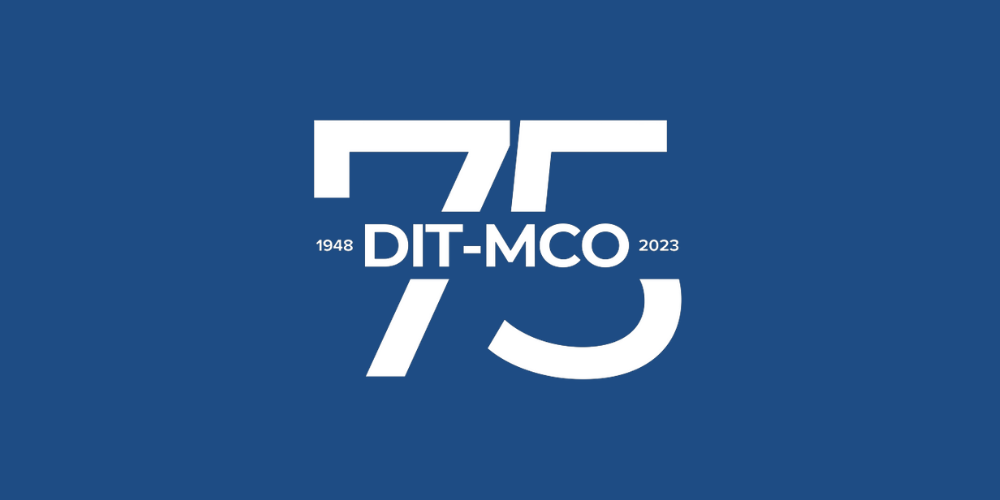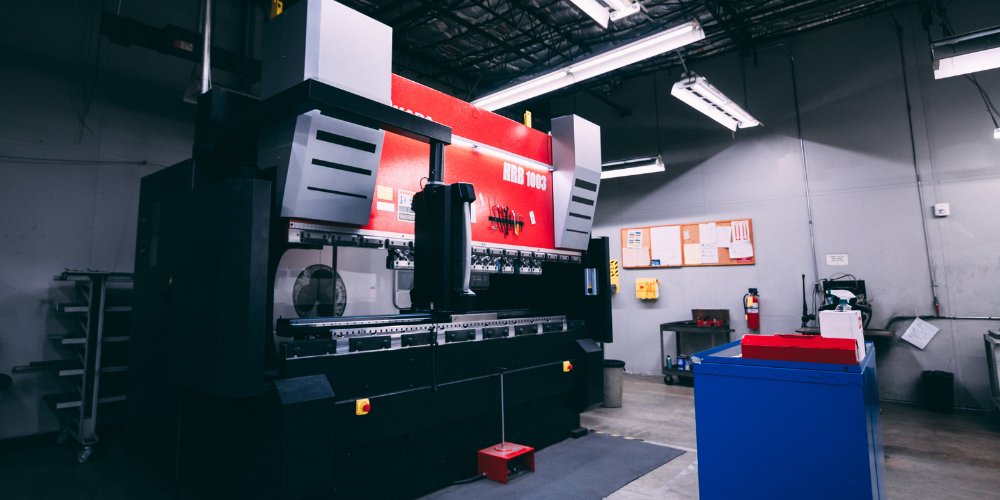Early Years
DIT-MCO began in 1948 under the name Drive-In Theatre Manufacturing Company. Known for selling speakers for drive-in theaters, DIT-MCO also manufactured other items related to the industry, such as concession stand lights and movie screens. In 1951, the company’s name was changed from Drive-In Theatre Manufacturing Company to DIT-MCO Incorporated. In the early 1950s, aircraft wiring became too complex to test manually. Harnesses had become a maze of electrical nerves, and no automatic wiring test systems existed to test them accurately.
Inventing the Wiring Analyzer
In 1952, George P. Heller and GE engineer Warren Hannon determined they would solve the issue. Hannon left GE and started working for Drive-In Theatre MFG. Company. He and Heller went to work building an automated wiring analyzer. Two years later, Hannon changed his title from Engineer to Head of Sales and began calling on prospects for the Model 200.
The DIT-MCO Automatic Electrical Circuit Analyzer solved problems that had plagued the industry. It was fast, accurate, and so simple that inexperienced personnel could use it after minimum training. Its acceptance was immediate.
The Aeronautical Division of Goodyear purchased the first DIT-MCO tester, the Model 200. Shortly after that, Boeing purchased one for work on the B-47. The Model 200 proved such a boon to DIT-MCO that by 1959, the company changed its focus to circuit analyzers exclusively. While the company changed focus, the name stayed DIT-MCO. F. L. “Tom” Thompson, a former president and CEO of DIT-MCO International, explained, “We kept the name DIT-MCO because by then, it had become common for the military and its industrial suppliers to say, ‘This aircraft needs to be DIT-MCOed.’”
Becoming the Leader
DIT-MCO earned brand-name recognition while its engineers helped develop high-voltage testing specifications that set the standard for the military and its industrial suppliers. Those early specifications are still used with today’s high-performance aircraft and missile systems.
The Cold War and the Space Race drove the need for more advanced and more extensive test systems in the following years. By 1960, engineering work began on the first random access wiring analyzer. The first units used punch paper tape for control, a precursor to computers on the front end in the 1970s. “We went away from the fixed-sequence equipment so standard interconnect cables could be used,” explained Thompson. “Technological advances in switch design and fault detection increased the speed of the test systems.”
DIT-MCO’s equipment was used on the early Hawk missile and commercial and military aircraft, such as the F-89 Scorpion Jets and the B-47 Bomber. Meanwhile, the space industry used DIT-MCO for testing the Dyna-Soar, Project Mercury, Project Gemini, and the Apollo Program, which took men and the Lunar Module to the moon.
Technological advances in the 1970s brought the addition of minicomputer technology, allowing greater power through software applications. The focus was less on the switching technology and more on the test process from design to repair. The computers allowed for the processing of wire lists directly into test programs, eliminating the lengthy and tedious process required previously. Workstations were networked into a multiuser environment to make the most of the minicomputer.
The advent of microprocessor technology further advanced the test technology. Embedded controllers improved the capabilities of cable testers from simple “go/no go” detectors to complex analysis systems while reducing the size of the systems. With capabilities such as fault location, today, the test operator is given precise indicators of the physical location of the fault, saving valuable time in the test process. The size of cable testers continues to reduce due to advances in component design. Now, switching matrixes can be constructed to provide several thousand test points in a bench-top system, whereas the first circuit analyzer in 1954 provided only 200 test points.
While large matrixes were available in the 1970s, they were designed with many large cabinets standing side-by-side. That concept is less common now as the switching matrix is built into many small modules that can be placed close to the test article, eliminating the need for long adapter cables. Sometimes, the switching matrix is built into line replaceable units (LRU) that fit into the same slots as the onboard avionics, eliminating adapter cables.
By the 1990s and early 2000s, DIT-MCO also focused on the commercial aircraft industry. Companies like Boeing, Airbus, Bombardier, Embraer, and others began using DIT-MCO systems to test complex wiring harnesses. The Model 2500 can be found in wiring harness hangers worldwide.
The Next 75
Present-day DIT-MCO is still focused on all the mentioned industries. The company's Continued growth, along with further advancements in technology, has allowed an advancement in test equipment. The addition of handheld testers and portable field analyzers has brought focus to test portability. New interface options also further drive the mission of reducing wasted test points, test time, and testing costs. DIT-MCO also introduces new software solutions to support more significant quality assurance objectives.
On a global scale, DIT-MCO continues to partner with companies that are paving the way for the future. Advances in technology in industries such as aerospace, defense, maritime, rail, etc., continue to rely on wiring analyzers provided by DIT-MCO.
DIT-MCO will be at the forefront of the wiring harness and cable testing industry for the next 75 years. “As we celebrate the company’s past accomplishments, all of us at DIT-MCO are excited for the future. Our great team is working on innovations supporting the wire/harness industry. This team and company are committed to remain the market leader for the next 75 years,” commented DIT-MCO president David Shier.



